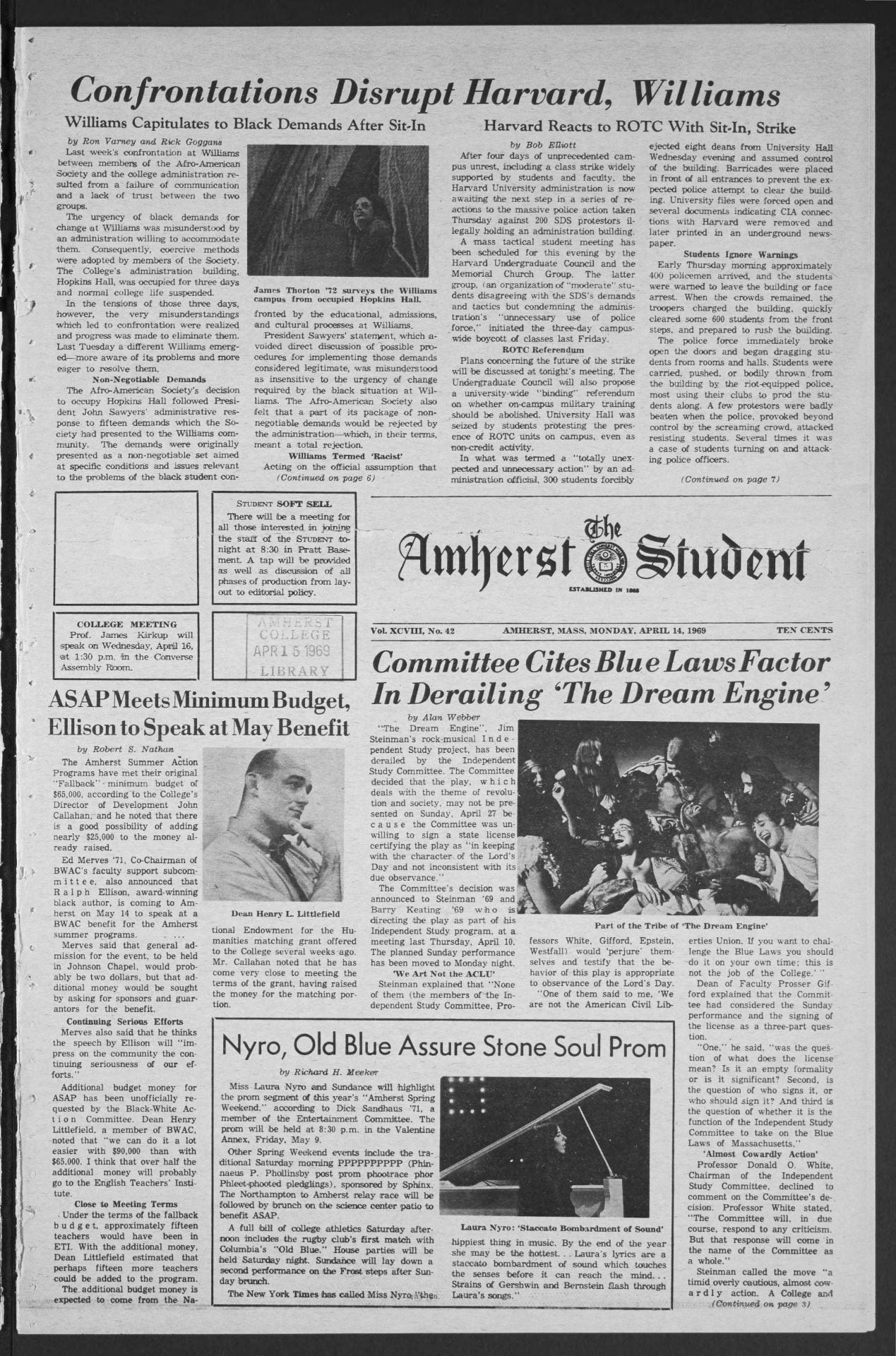Summary
| Parameters | Amherst Student, 1880-90 | Amherst Student, 1980-90 |
|---|---|---|
| Dominant Topics | athletic games myth and religion college malfunction fire, flood | world and domestic politics fire, flood policies and administrations academics |
| Genres Represented | reports op-eds speeches interviews non-fictions | op-eds reports interviews fictions non-fictions |
| Emotions Conveyed | depression anger care happiness | depression fear anger hope |
What to look for
- Anger and depression dominate human-made disasters, while hope and care dominate natural-made disasters.
- The word “disaster” is not necessarily used to describe the “disasters” by this project’s definition. In the event of a real disaster, the replaced words are “catastrophe”, “tragedy”, and other codified triggers of an unfortunate incident.
- Avoidance of emotional trigger words is a strategy employed by the editorials since the 1930s. However, traces of describing the disasters are still carried faithfully in third-person accounts. In some fictional writing pieces, the depiction of disasters is much more accurate than in the up-to-date news reports.
- The study has yet to reveal the possible correlation between the genres and emotions conveyed through disasters. Future researchers may progress in this direction using emotion-detecting machine-learning software.
- The study is limited to the maximum size of the corpus the topic modeling software can process. The decade of [ ]80-90 is selected by randomly generating one number from 1-10, as 1 represents 00-10, 2 represents 10-20, etc. We presume that showing 1880-90 in comparison to 1980-90 would accentuate the different stylistic choices writers make over time.
Project by Haoran Tong ’23, DSSF 2020
